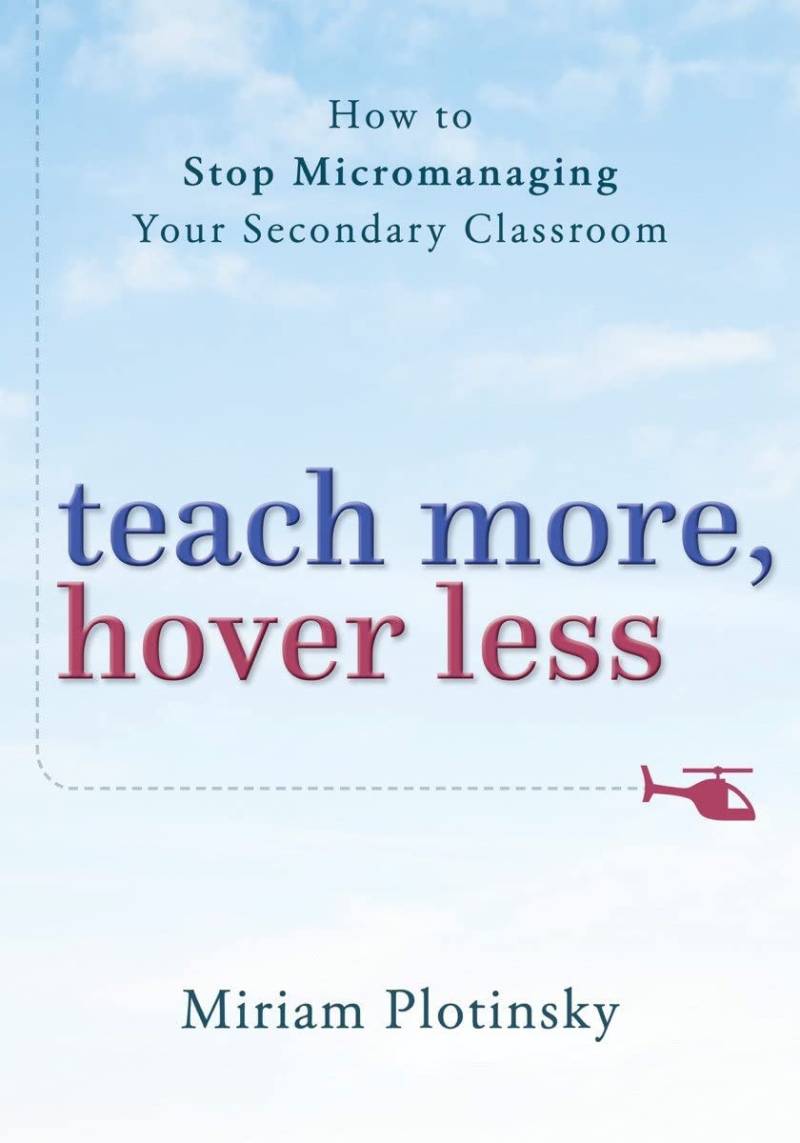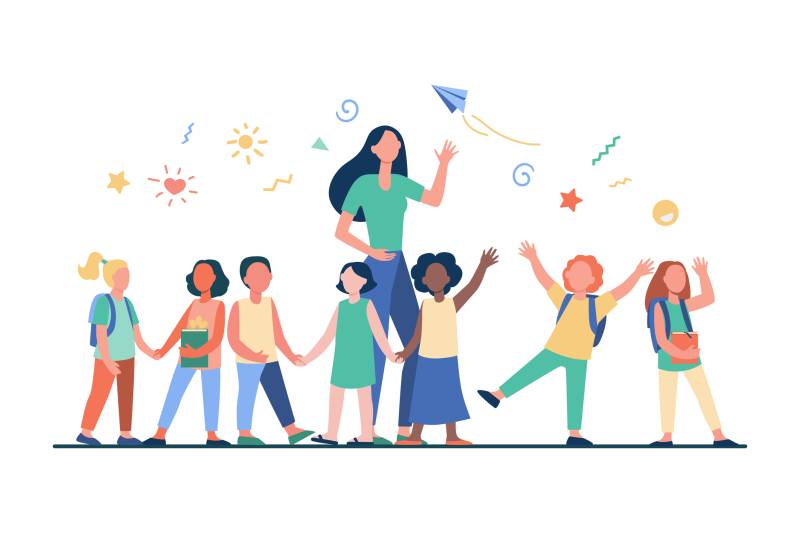Excerpted from “Teach More, Hover Less: How to Stop Micromanaging Your Secondary Classroom” by Miriam Plotinsky. Copyright © 2022 by Miriam Plotinsky. Used with permission of the publisher, W. W. Norton & Company, Inc. All rights reserved.
Targeting deeper relationship-building in our lesson planning should have a strong tie-in to what we want students to achieve. We run into difficulty when we do not make a clear connection between how teachers and students interact with each other and the way that relationships play into the establishment of a safe learning space. We are very aware of the need to make students comfortable in class, particularly at the start of an instructional period, but sometimes that priority does not bear out for the remainder of the class.
 As an illustration, during a visit to a middle school social studies department meeting, I was asked to weigh in on how the teachers were developing connections with students. The teachers, all sitting in a circle, shared some beautifully creative ideas with one another. For example, one teacher played a game in which students needed to agree on a common definition of soup. If any liquid food in a bowl was defined as soup, did chocolate sauce count? Or if the food was defined by certain other parameters (e.g., could be eaten with a spoon), was cereal really soup? Was temperature significant? The teacher shared the enthusiasm of her students for this conversation and how lively the debate became as the class worked toward a shared understanding.
As an illustration, during a visit to a middle school social studies department meeting, I was asked to weigh in on how the teachers were developing connections with students. The teachers, all sitting in a circle, shared some beautifully creative ideas with one another. For example, one teacher played a game in which students needed to agree on a common definition of soup. If any liquid food in a bowl was defined as soup, did chocolate sauce count? Or if the food was defined by certain other parameters (e.g., could be eaten with a spoon), was cereal really soup? Was temperature significant? The teacher shared the enthusiasm of her students for this conversation and how lively the debate became as the class worked toward a shared understanding.
After the meeting, I met with the department chair to debrief. To begin, we agreed that the teachers were dedicated to creating a safe learning space for their students and that they had excellent ideas in terms of how to achieve this goal. We also agreed that while the opening activities were a lot of fun, they did not necessarily connect to the lesson that followed. For example, I asked if the teacher doing the community builder on soup was teaching a unit focused on debate, because the activity could be an excellent way to prepare students to structure logical arguments, and the answer was no. More often than not, these opening warm-ups teachers shared existed for the primary purpose of bringing students into the class period in a welcoming and enjoyable way. While getting students off to a good start is a worthy purpose and does help with building trust, does it accomplish the entire goal of building a relationship that continues to be meaningful once the learning has begun?
The problem with keeping a sense of rapport or connection separate from academic content is that students make a distinction in their minds between a teacher’s personal interest in them and the teacher’s belief that they can learn. They might think something like, “Mr. Jones likes me, but he knows I’m not good at math.” Aside from the obvious issue with any student feeling this way, these thoughts are usually hidden from the teacher, who thinks all is well. That is why we might think our students really like us or enjoy our classes, but when we give student-voice surveys and they respond anonymously, their perceptions can sometimes emerge as startlingly unfavorable comments.



 Miriam Plotinsky
Miriam Plotinsky